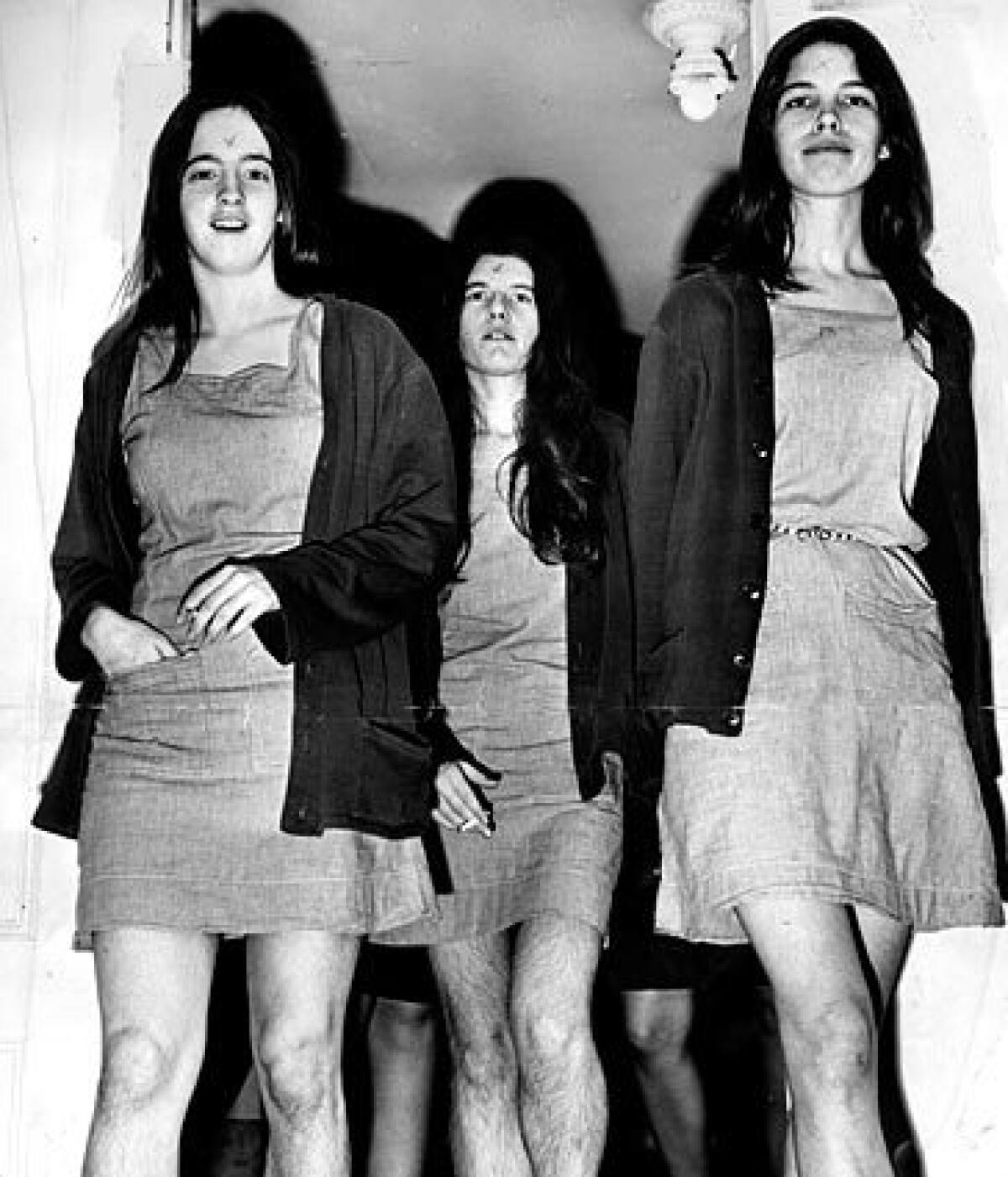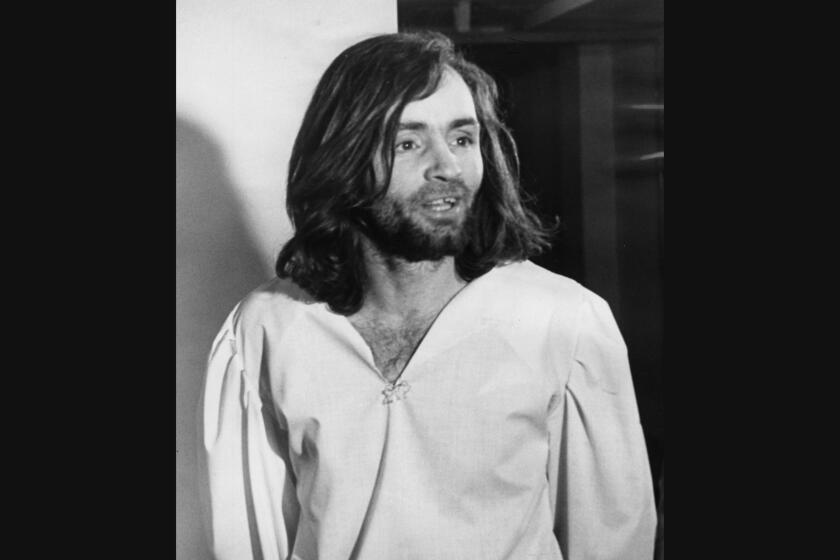Making sense of the Manson ‘family’ murders — a reading list

For readers contemplating the Charles Manson phenomenon, there’s a still-growing library of literature that seeks to explain the how and why behind the bloody killing spree in summer 1969.
Depending on your interest, here are a few suggested readings, organized by topic.
For the record:
5:25 p.m. July 25, 2019A previous version of this article referred to Tex Watson in one instance as Watkins.
To understand the crimes: Vincent Bugliosi and Curt Gentry’s bestseller “Helter Skelter: The True Story of the Manson Murders” is a detailed history originally published in 1974. It’s an account from the perspective of Bugliosi, the Los Angeles County deputy district attorney who prosecuted Manson and his followers. Bugliosi delves into the case against Manson, but he also strives to strip away the mystique already growing around him, as Robert Kirsch noted in a 1974 Times review. The prosecutor said Manson’s supposed mind-control powers “were nothing more or less than the ability to utter basic truisms to the right person at the right time.” Kirsch also described poet and musician Ed Sanders’ 1971 book “The Family,” written from the perspective of someone with an on-the-ground knowledge of the counterculture, as “an indispensable source” about the case.
For an alternative theory of the killings, the recently released “Chaos: Charles Manson, the CIA, and the Secret History of the Sixties,” challenges Bugliosi’s conclusions about Manson’s motives. The book, by Tom O’Neill with Dan Piepenbring, explores other shadowy angles, including Manson’s possible connections to government research on mind-control drugs.
To learn about the victims: “Restless Souls: The Sharon Tate Family’s Account of Stardom, the Manson Murders, and a Crusade for Justice,” by Alison Statman with Brie Tate, deals with the events surrounding Tate’s death from the perspective of her family. The 2012 book is based on interviews with family members, correspondence, diaries and other sources. Brie Tate is the daughter of Sharon Tate’s niece.
To explore Manson’s origin story: Jeff Guinn’s 2013 biography “Manson: The Life and Times of Charles Manson” details his chaotic, cruel upbringing and his early career in crime. That includes the time Manson spent incarcerated at Terminal Island in the 1950s for car theft, when he conversed with pimps and picked up techniques on how to manipulate young women.
Nuel Emmons’ “Manson in His Own Words,” originally published in 1987, is based on hundreds of hours of interviews and correspondence with Manson over a six-year period. In the book, Manson boasts about the influence he exerts on those still fascinated with him. “Save your sympathy and know that only a body is in prison. At my will, I walk your streets and am right out there among you,” he says in a passage quoted in a Times review by Gary L. Cunningham. Edward George’s and Dary Matera’s “Taming the Beast: Charles Manson’s Life Behind Bars,” published in 1998, provides a glimpse of the aging incarcerated Manson from his former prison counselor in the late 1970s and early 1980s. Manson died in 2017, after more than four decades in prison.
To get into the heads of his followers: Several have written memoirs, including Charles “Tex” Watson’s “Will You Die for Me?” and Susan Atkins’ “Child of Satan, Child of God.” (Watson was denied parole in 2016, while Atkins died in prison in 2009.) Nikki Meredith’s 2018 “The Manson Women and Me: Monsters, Morality, and Murder,” is based on the author’s prison visits over a 20-year-period with followers Leslie Van Houten and Patricia Krenwinkel.
It’s also possible to gain insights about those who fell under Manson’s sway from Emma Cline’s 2016 novel “The Girls.” The book tells the story of fictional 14-year-old Evie Boyd and how she is drawn into the sway of a charismatic, Manson-like cult leader named Russell, a failed rock star who eventually sends his followers off to kill.
Before you see Quentin Tarantino’s “Once Upon a Time ... in Hollywood,” bone up on the musical cosmos of singer-songwriter-scenester-psychopath Charles Manson.
To revisit the time and place: A big part of making sense of Manson is understanding the era in which he and his so-called family committed their violence. “The White Album,” Joan Didion’s 1979 collection of essays, describes the vague but ever-present sense of menace that she felt living in Hollywood in 1969. She describes habitually writing down the numbers of vans that appeared on her street and storing them in a dresser drawer, “where they could be found by the police when the time came.”
When word first spread about the killings that August, Didion notes that many people viewed that as the moment when the 1960s ended. “The tension broke that day,” she writes. “The paranoia was fulfilled.”
Kiger has written for GQ, Mother Jones, Sierra magazine, Fast Company and History.com. He’s also cowritten two nonfiction books, “Poplorica” and “Oops.”
More to Read
Sign up for our Book Club newsletter
Get the latest news, events and more from the Los Angeles Times Book Club, and help us get L.A. reading and talking.
You may occasionally receive promotional content from the Los Angeles Times.







